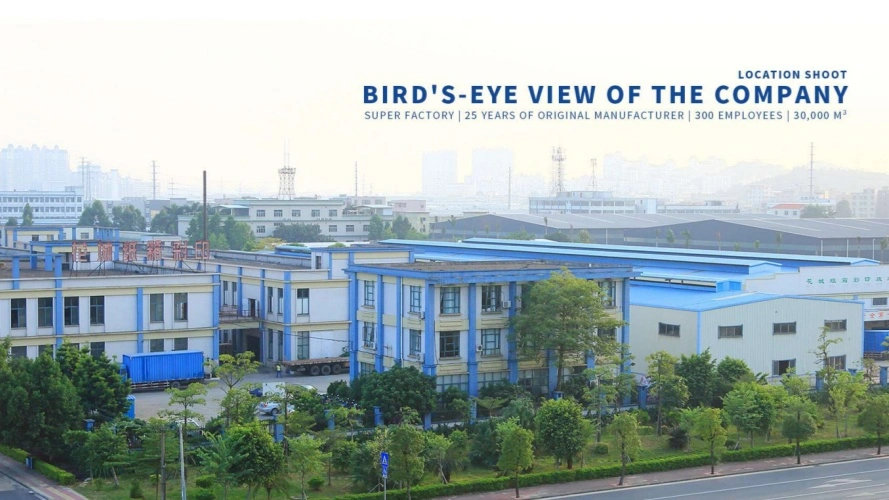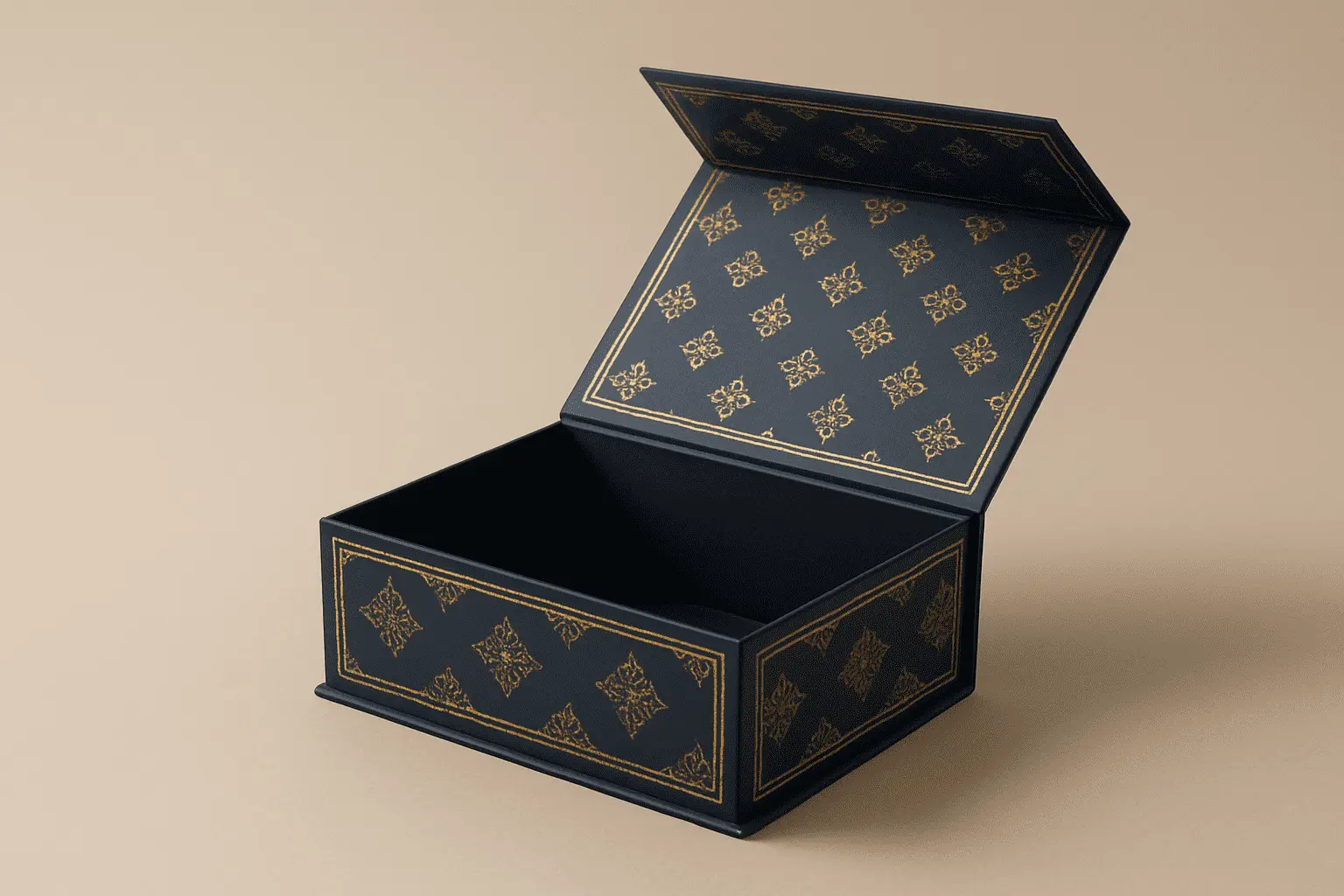Designing effective packaging that enhances brand perception requires a strategic approach that balances visual appeal, functional excellence, and brand storytelling. Professional packaging serves as your brand's silent ambassador, communicating value propositions before customers even interact with your product. The right design choices transform ordinary containers into powerful marketing tools that influence purchasing decisions and build lasting customer relationships. Quality packaging design integrates color psychology, material selection, and structural innovation to create memorable brand experiences that resonate with target audiences and differentiate products in competitive markets. Packaging design functions as a pivotal element in shaping brand perception, bridging product presentation and buyer psychology effectively. For procurement professionals in B2B sectors, aligning packaging strategies with broader business goals enhances marketing effectiveness, customer experience, and product differentiation significantly. This comprehensive guide explores how packaging acts as a critical touchpoint that reflects brand values and drives purchasing decisions, establishing the foundation for strategic procurement aligned with brand identity and operational requirements.

Understanding the Core Challenges in Packaging Design
Modern businesses encounter numerous obstacles when developing packaging solutions that truly enhance brand perception. Generic or inconsistent packaging undermines brand image by failing to communicate unique value propositions or maintain visual coherence across product lines. Many companies struggle with balancing cost constraints against quality expectations, often resulting in compromised designs that neither protect products adequately nor create positive brand impressions. Packaging design extends beyond aesthetics to influence buyer psychology and build brand trust systematically. However, many businesses face challenges such as generic or inconsistent visual elements that undermine brand image development. Functional shortcomings and lack of sustainability further detract from consumer and procurement appeal significantly. These issues often stem from insufficient market research, neglecting sustainable initiatives, and overlooking compliance with regulatory standards. These represent key factors that procurement teams must address to optimize packaging's role in reinforcing brand credibility and meeting operational demands. Sustainability concerns present another significant challenge as consumers increasingly prioritize environmentally responsible choices. Companies must navigate complex decisions between traditional materials and eco-friendly alternatives while maintaining product protection standards and visual appeal. Regulatory compliance adds another layer of complexity, particularly for businesses operating across multiple markets with varying requirements for labeling, safety warnings, and material specifications.
Principles for Designing Packaging That Enhances Brand Perception
Successful brand-enhancing packaging begins with establishing clear visual identity elements that reinforce brand recognition and emotional connections. Color selection plays a crucial role in consumer psychology, with specific hues triggering different emotional responses and purchase behaviors. Typography choices must balance readability with brand personality, ensuring information hierarchy guides customer attention effectively through key messaging and product details. Effective packaging design starts by aligning visual elements including color palettes, typography selections, and graphic compositions with core brand identity to create memorable storytelling experiences. Prioritizing eco-friendly materials not only supports sustainability goals but also strengthens brand reputation amid increasing environmental awareness trends. Functional packaging tailored for protection, user convenience, and e-commerce logistics enhances practical value significantly. Material selection significantly impacts brand perception, with premium substrates like SBS C2S conveying luxury and quality while cost-effective options like CCNB maintain professional appearance within budget constraints. Surface finishing techniques including UV coating, hot foil stamping, and embossing create tactile experiences that reinforce premium positioning and memorable unboxing moments. These finishing options transform standard packaging into sophisticated brand touchpoints that justify premium pricing strategies. Moreover, adherence to industry-specific regulations across sectors such as pharmaceuticals, food, and electronics remains critical for market acceptance. Together, these principles ensure packaging designs are both compelling and compliant, driving stronger connections and loyalty in procurement and end-user markets effectively.
Case Studies: Successful Packaging Designs That Elevated Brand Perception
Premium cosmetics brands demonstrate exceptional packaging design strategies through innovative material combinations and sophisticated finishing techniques. Leading beauty companies utilize high-quality substrates with metallic accents and embossed textures to convey luxury positioning and justify premium price points. These design choices create memorable unboxing experiences that encourage social media sharing and brand advocacy among target consumers. Real-world examples illustrate how premium packaging effectively conveys luxury and quality perceptions, particularly visible in cosmetics and electronics sectors. Leading US companies showcase innovations in sustainable packaging solutions that merge eco-conscious materials with effective design strategies. Small businesses benefit from customized printed packaging solutions that boost customer engagement and enhance brand recall significantly. Electronics manufacturers successfully leverage structural innovation and protective functionality to enhance brand perception while ensuring product safety during shipping and handling. Apple's minimalist packaging design exemplifies how clean aesthetics and premium materials create anticipation and reinforce brand values of simplicity and innovation. The strategic use of white space and precise typography creates visual hierarchy that guides user attention effectively. Additionally, innovative e-commerce packaging enhances both product protection and unboxing experiences, representing crucial factors for online retailers and procurement strategists focusing on brand visibility and customer satisfaction in digital marketplaces. Subscription box services demonstrate how consistent packaging design builds anticipation and reinforces brand identity through repeated customer interactions.
Step-by-Step Packaging Design Process for B2B Procurement
Developing effective packaging solutions requires systematic planning that begins with comprehensive market research and competitive analysis. Understanding target audience preferences, purchasing behaviors, and pain points informs design decisions that resonate with intended customers while differentiating from competitors effectively. The packaging design journey begins with comprehensive market research and product-specific needs assessment, ensuring alignment with procurement budgets and business objectives clearly. Material and supplier selection involves balancing cost considerations, quality standards, and sustainability requirements while identifying trustworthy manufacturing partners. Collaborative design development includes prototyping phases with iterative feedback cycles to refine functional and aesthetic aspects systematically. Here are the essential steps for successful packaging development implementation:
Professional packaging development follows structured phases that ensure optimal outcomes within budget and timeline constraints. Each phase builds upon previous discoveries while incorporating stakeholder feedback and market insights.
- Demand consultation and requirements gathering: Initial discussions establish project scope, budget parameters, timeline expectations, and technical specifications while identifying potential challenges and opportunities for innovation within existing constraints.
- Solution design and concept development: Creative teams develop multiple design concepts that address functional requirements while exploring various aesthetic approaches, material options, and finishing techniques suitable for target market positioning.
- Professional implementation and prototyping: Selected concepts advance to prototype development where physical samples undergo testing for functionality, durability, and visual appeal while gathering feedback from stakeholders and target customers.
- Order placement and production planning: Final approvals trigger production planning phases including material procurement, production scheduling, quality control protocols, and delivery coordination to ensure timely project completion.
These systematic approaches enable procurement teams to make informed decisions while managing risks and optimizing resource allocation throughout the development process. Rigorous testing and ensuring regulatory compliance safeguard product integrity and legal adherence across target markets. Post-launch monitoring and optimization allow adaptation to evolving brand values and market trends, supporting procurement strategies that emphasize continuous improvement and operational excellence throughout product lifecycles.
FetchingPrinting: Your Partner for Premium Packaging Solutions
FetchingPrinting stands as a reliable partner for B2B procurement teams seeking innovative custom packaging solutions that enhance brand perception effectively. With over 20 years of industry experience since our founding in 1999, our 35,000 square meter facility houses advanced manufacturing equipment including KBA106-(9+1) UV printing machines and Heidelberg XL162-6L printing systems. Our team of 300+ skilled professionals serves over 1,000 loyal customers across diverse industries including food, cosmetics, personal care, and electronics sectors. Our proprietary collapsible rigid box technology represents breakthrough innovation in cost-effective premium packaging solutions. We offer three distinct sizes—Large (suitable for magnetic gift boxes with product heights of 100-150mm), Medium (accommodating heights of 50-100mm), and Tiny (designed for 20-50mm products)—each protected by our exclusive patents. These innovative designs reduce shipping and storage costs by more than 60% compared to traditional rigid gift boxes while maintaining superior structural integrity and visual appeal. Specializing in eco-friendly materials suited for various applications, we provide end-to-end services spanning design consultation, bulk sourcing, custom printing, and complete packaging solutions. Our R&D department features ten experienced packaging engineers who offer expertise in new material applications, structural development, artwork design, and advanced process technology implementation. Our comprehensive material options include premium SBS C1S and C2S substrates for luxury applications, cost-effective CCNB for budget-conscious projects, sustainable Brown Kraft for eco-friendly initiatives, and striking metallic finishes for premium positioning. Advanced finishing capabilities encompass UV coating, hot foil stamping, embossing, die-cutting, and specialized combination treatments that create memorable tactile experiences reinforcing brand values.
Frequently Asked Questions
Q1: What materials are best for sustainable packaging without compromising durability?
A: Brown Kraft and CCNB materials offer excellent sustainability while maintaining structural integrity. Brown Kraft provides natural aesthetics with high tensile strength, while CCNB utilizes recycled content without sacrificing print quality. Both options support FSC certification and recyclability goals while delivering reliable product protection.
Q2: How can packaging design improve e-commerce customer experience?
A: Effective e-commerce packaging focuses on unboxing experiences through thoughtful structural design, protective functionality, and engaging visual elements. Features like easy-open tabs, resealable closures, and branded interior designs create positive impressions while ensuring products arrive undamaged. Strategic use of finishing techniques adds premium touches that encourage social sharing.
Q3: What are common packaging regulations B2B procurement managers should be aware of?
A: Key regulatory considerations include FDA requirements for food contact materials, CPSC standards for consumer products, and environmental regulations governing material disposal. Industry-specific certifications like ISO standards and Disney approval ensure compliance across various markets. Working with certified manufacturers simplifies regulatory navigation while maintaining compliance standards.
Transform Your Brand Perception with Professional Packaging Solutions
Ready to elevate your brand perception through innovative packaging design that captures customer attention and drives business growth? FetchingPrinting combines decades of manufacturing expertise with cutting-edge technology to deliver packaging solutions that exceed expectations while maintaining cost efficiency. Our comprehensive approach ensures your packaging serves as a powerful marketing tool that reinforces brand values and creates memorable customer experiences.
As a leading packaging manufacturer, we understand the critical role that thoughtful design plays in business success. Our ISO-certified facilities and experienced engineering team provide reliable support throughout your project lifecycle, from initial concept development through final delivery. Whether you need sustainable materials for eco-conscious branding or premium finishes for luxury positioning, our diverse capabilities accommodate varied requirements while maintaining consistent quality standards.
Contact us at public@fetchingprinting.com to begin your packaging transformation journey. Our packaging specialists are ready to discuss your specific requirements and develop customized solutions that enhance brand perception while optimizing procurement efficiency. Visit our website at blog.fetchingpack.com for additional insights and project examples that demonstrate our commitment to excellence in packaging innovation.
Conclusion
Effective packaging design represents a strategic investment in brand development that yields measurable returns through enhanced customer perception and increased market differentiation. The integration of visual identity elements, sustainable materials, and functional innovation creates compelling brand experiences that resonate with target audiences while supporting business objectives. By partnering with experienced packaging manufacturers who understand both aesthetic and functional requirements, businesses can develop solutions that elevate brand perception while optimizing operational efficiency and cost management throughout the product lifecycle.
References
1. Rundh, B. (2016). The role of packaging within marketing and value creation. British Food Journal, 118(10), 2491-2511.
2. Silayoi, P., & Speece, M. (2007). The importance of packaging attributes: A conjoint analysis approach. European Journal of Marketing, 41(11/12), 1495-1517.
3. Ampuero, O., & Vila, N. (2006). Consumer perceptions of product packaging. Journal of Consumer Marketing, 23(2), 100-112.
4. Rettie, R., & Brewer, C. (2000). The verbal and visual components of package design. Journal of Product & Brand Management, 9(1), 56-70.
5. Underwood, R. L. (2003). The communicative power of product packaging: Creating brand identity via lived and mediated experience. Journal of Marketing Theory and Practice, 11(1), 62-76.
6. Wells, L. E., Farley, H., & Armstrong, G. A. (2007). The importance of packaging design for own-label food brands. International Journal of Retail & Distribution Management, 35(9), 677-690.


